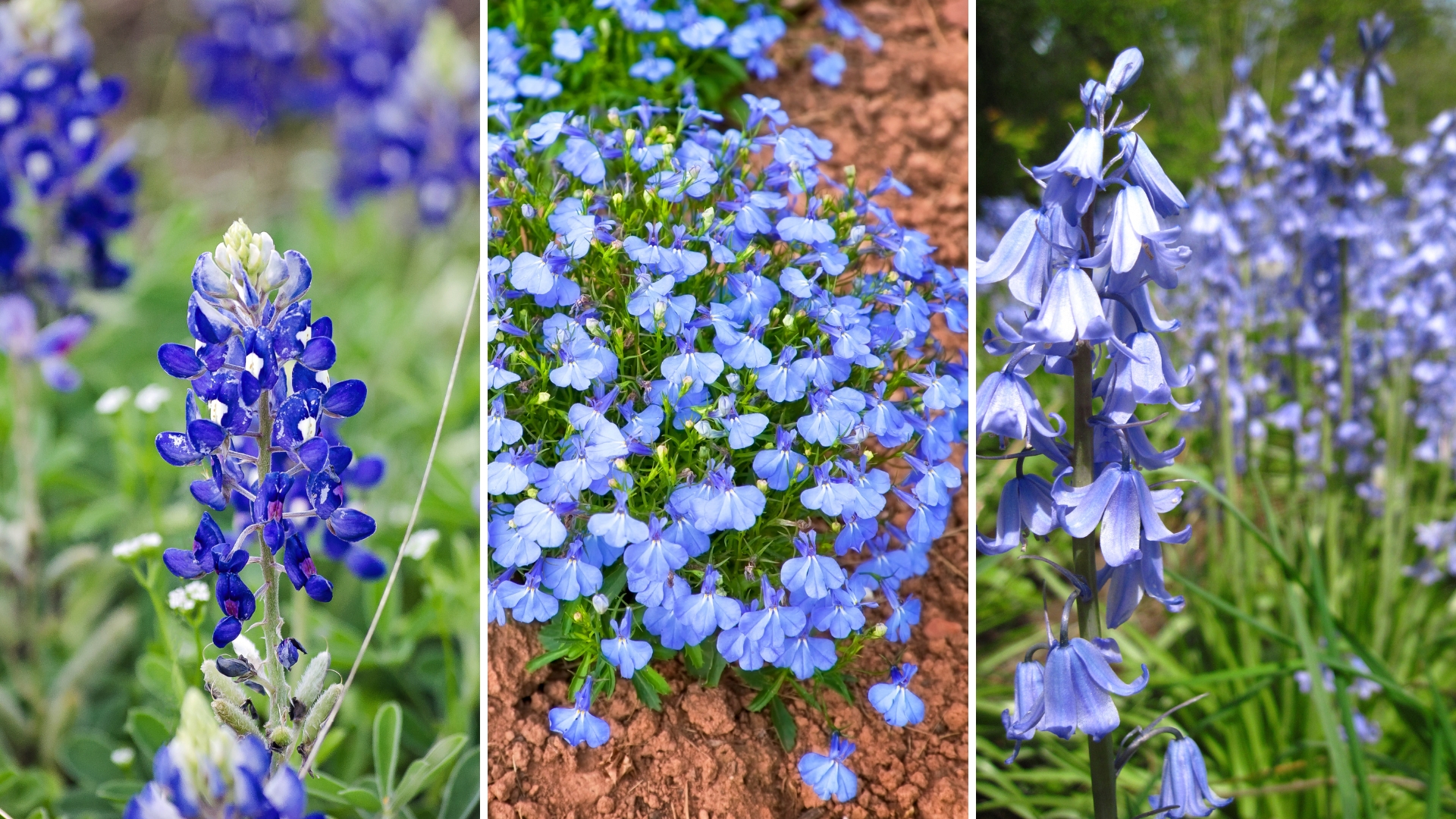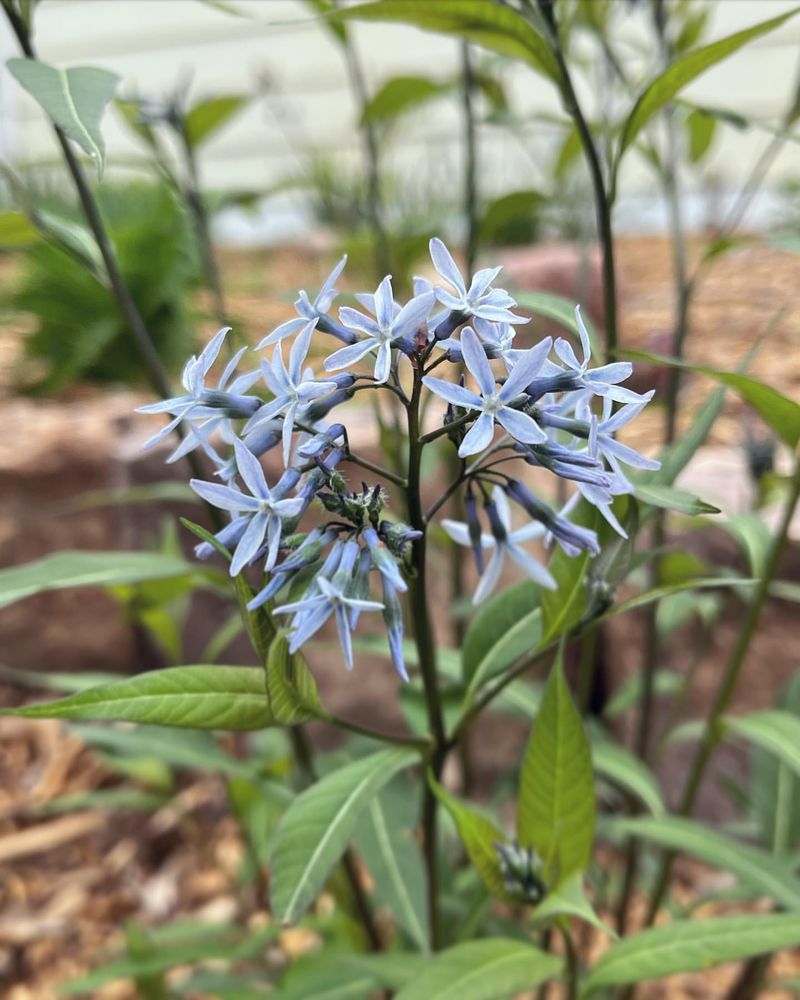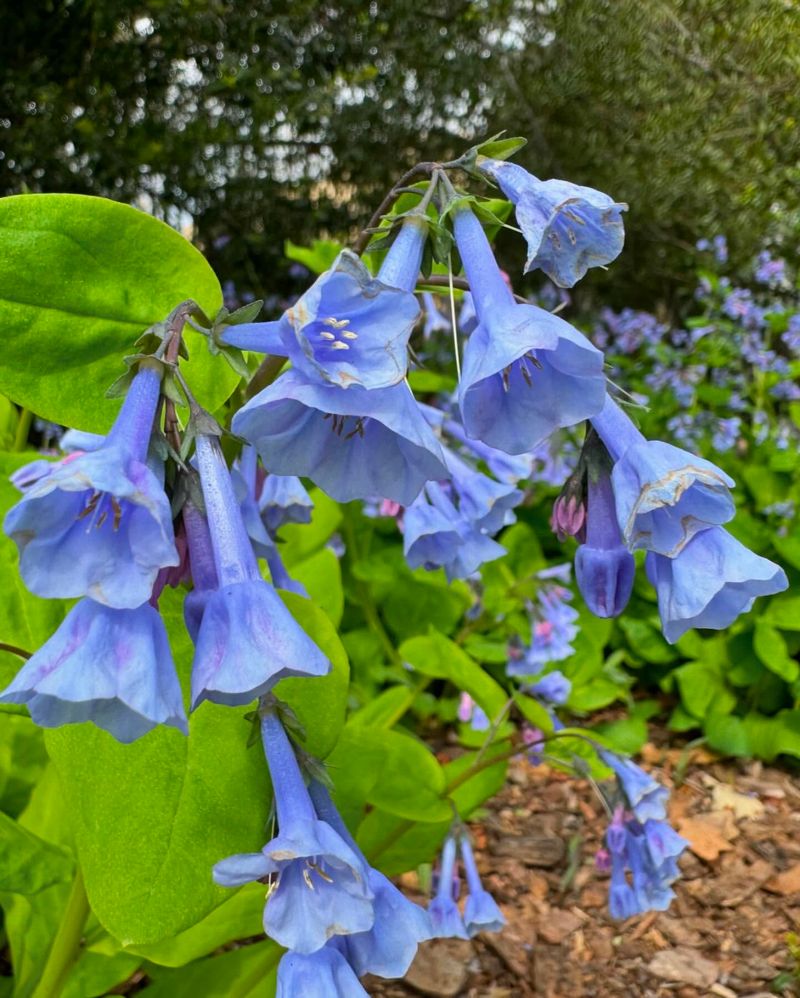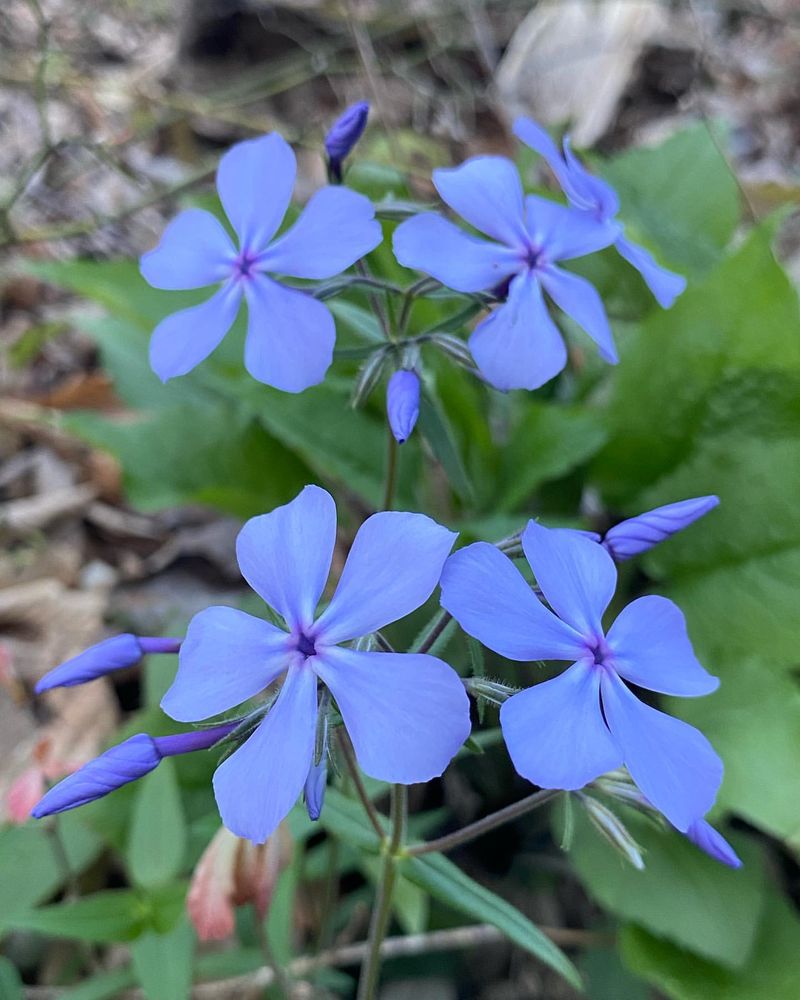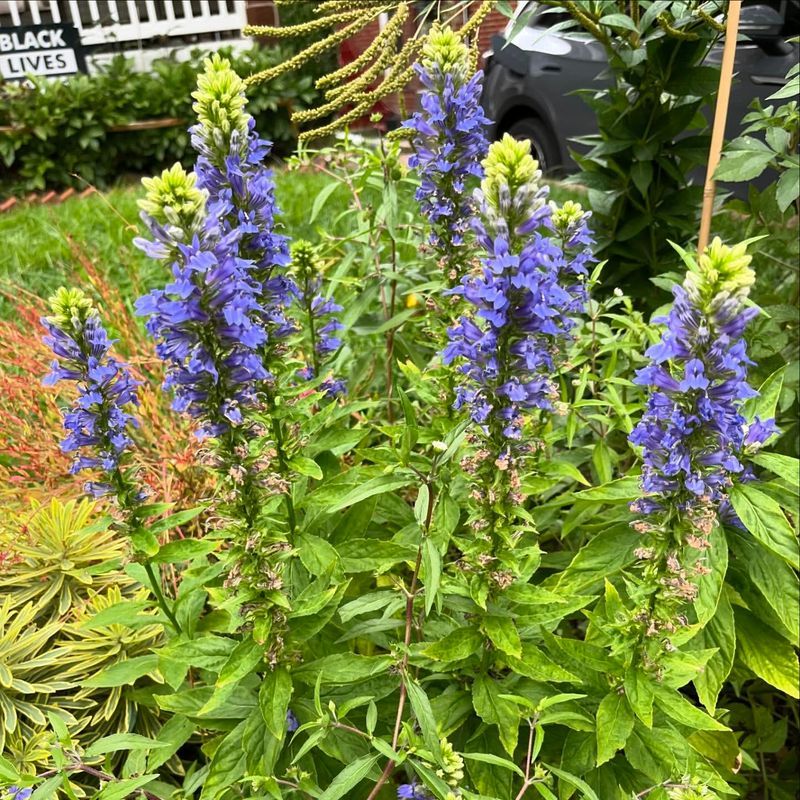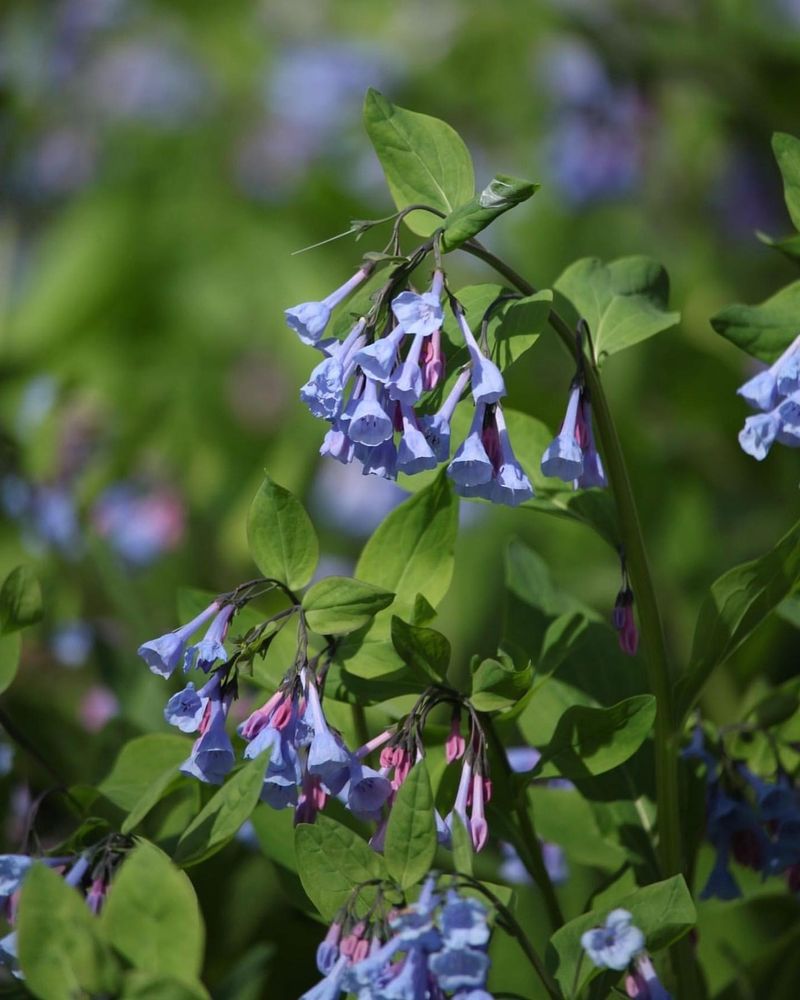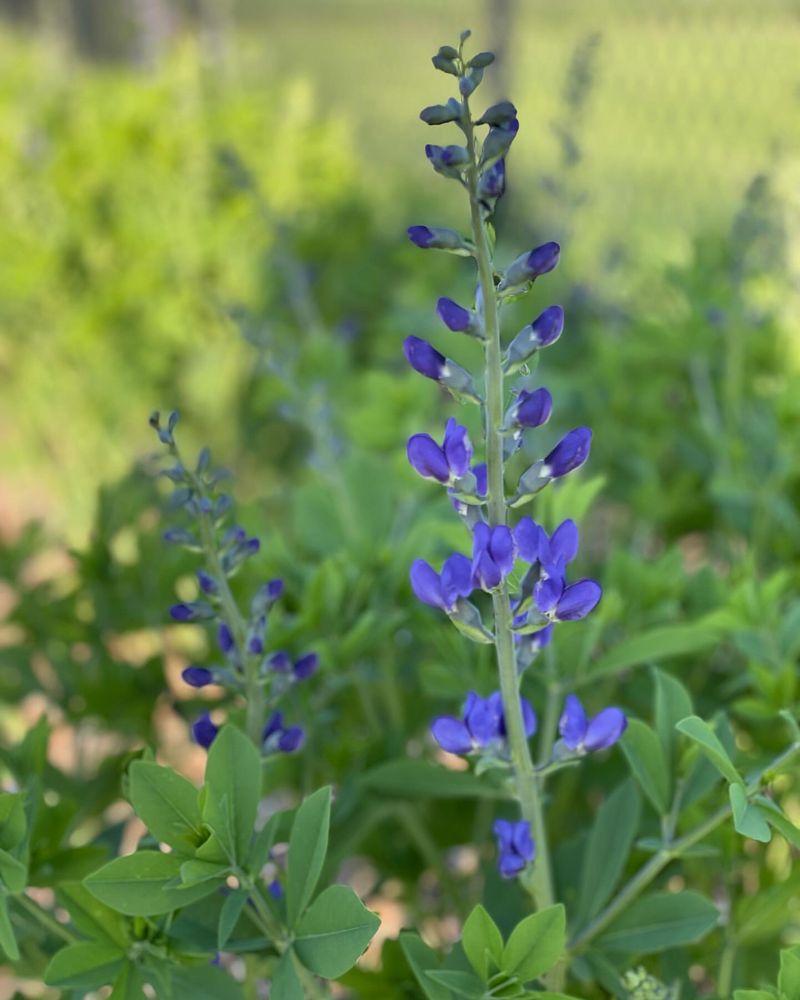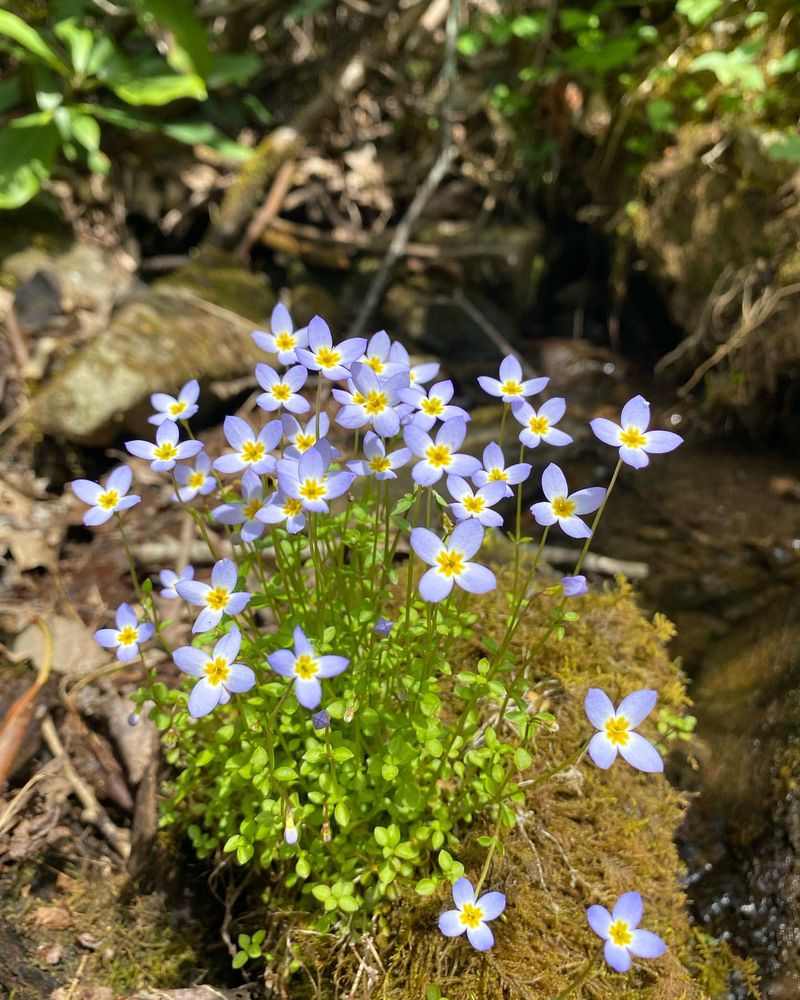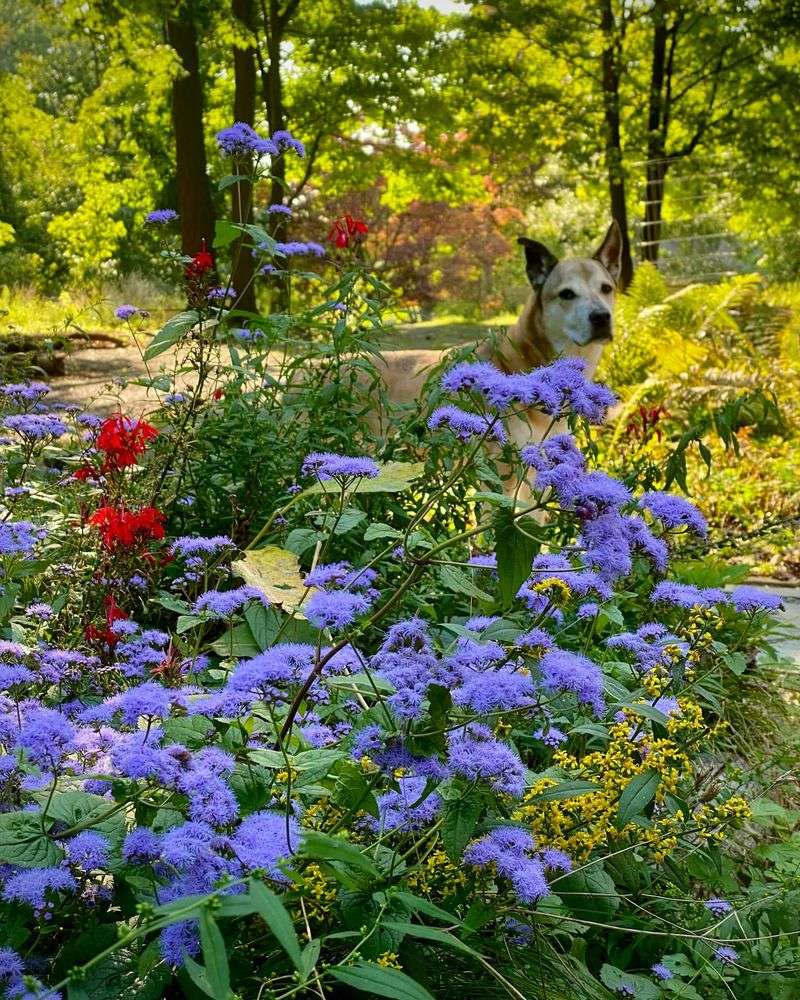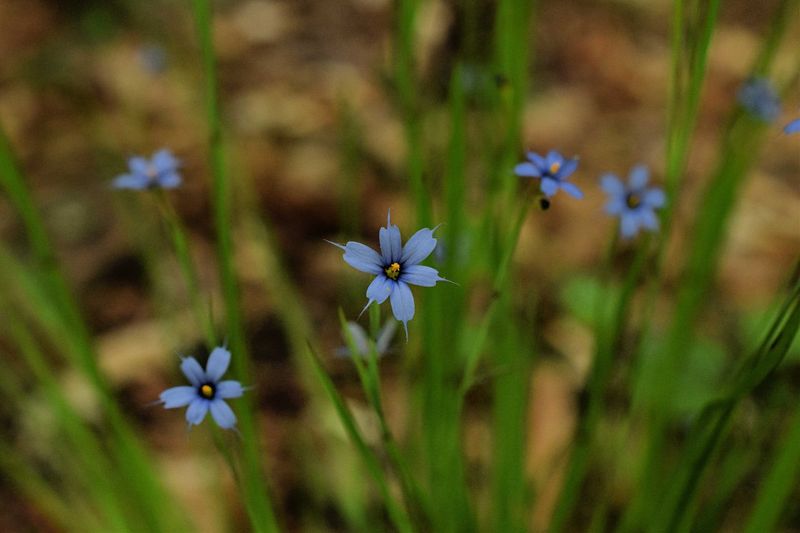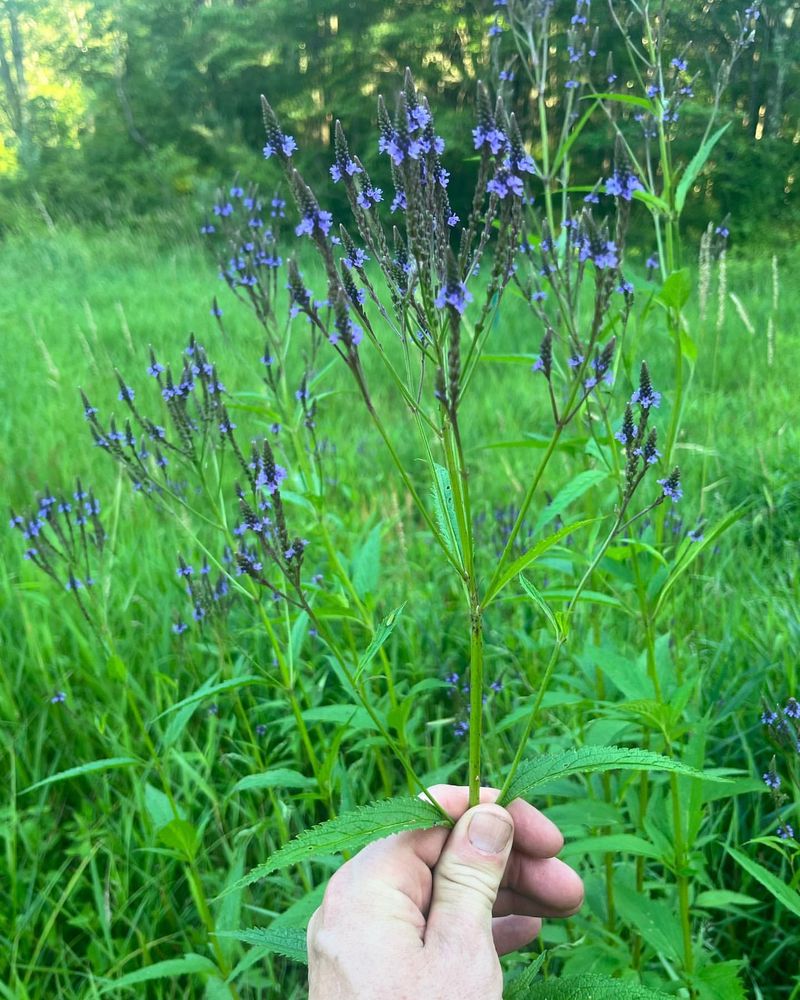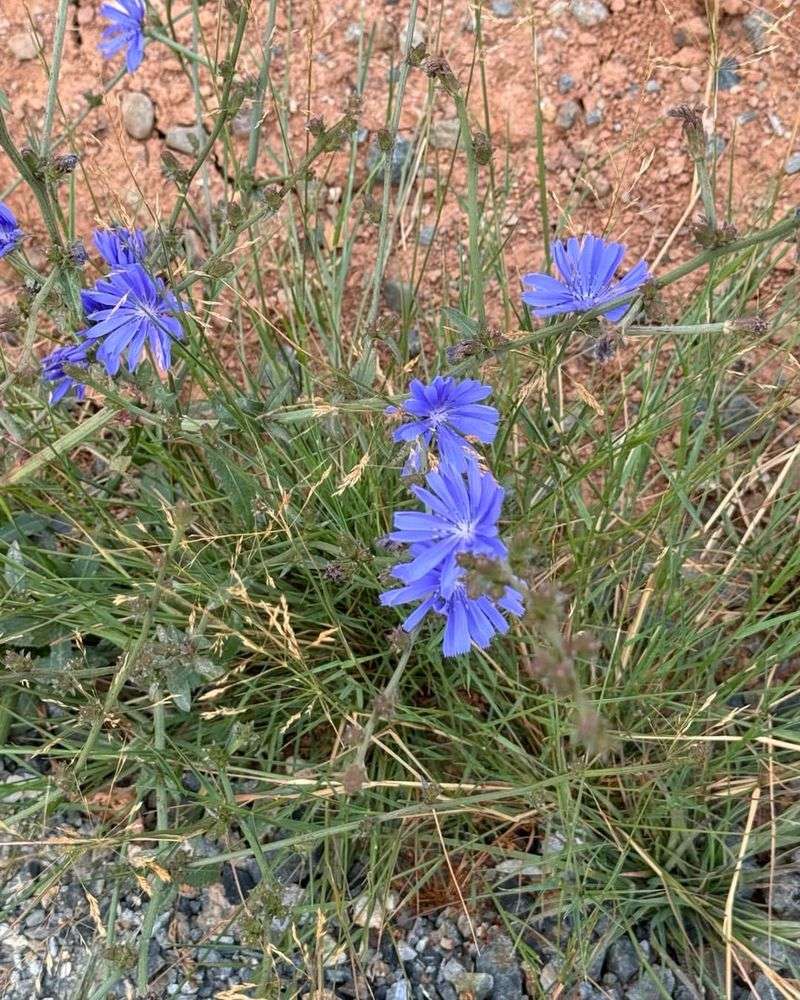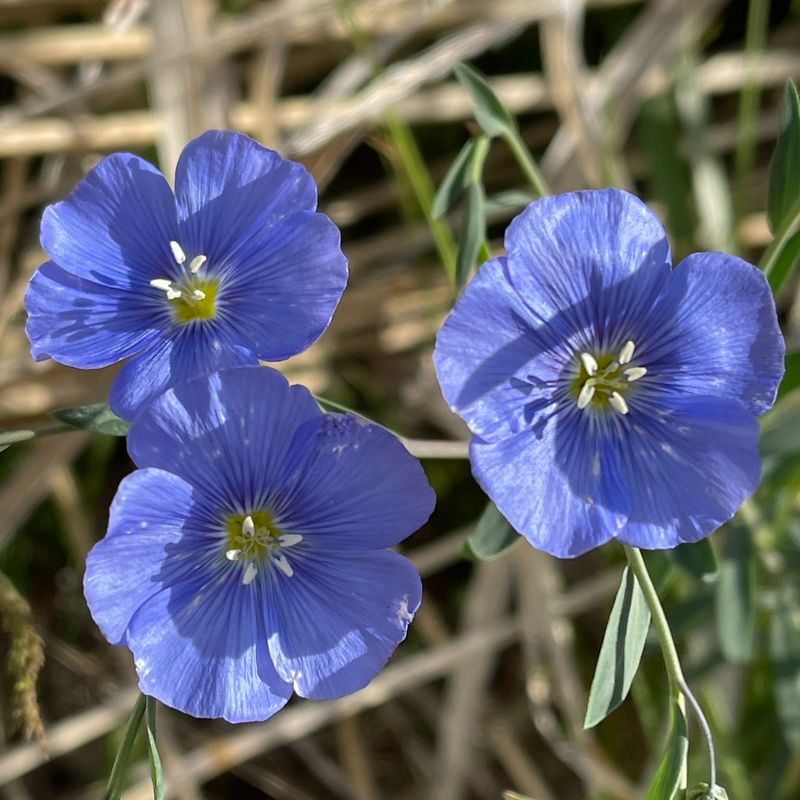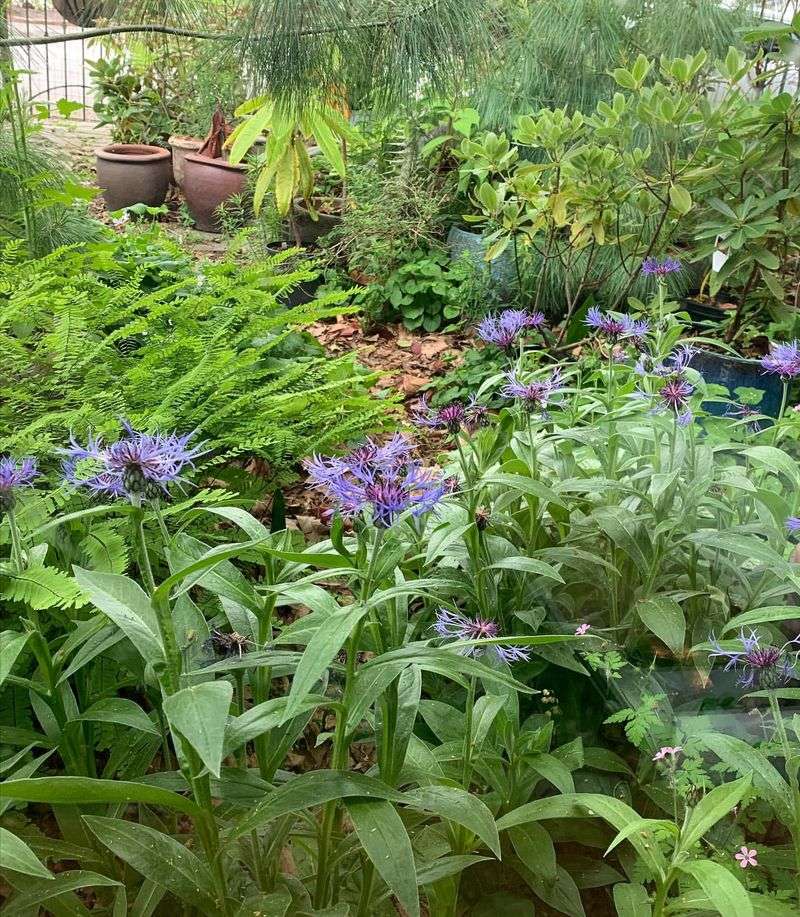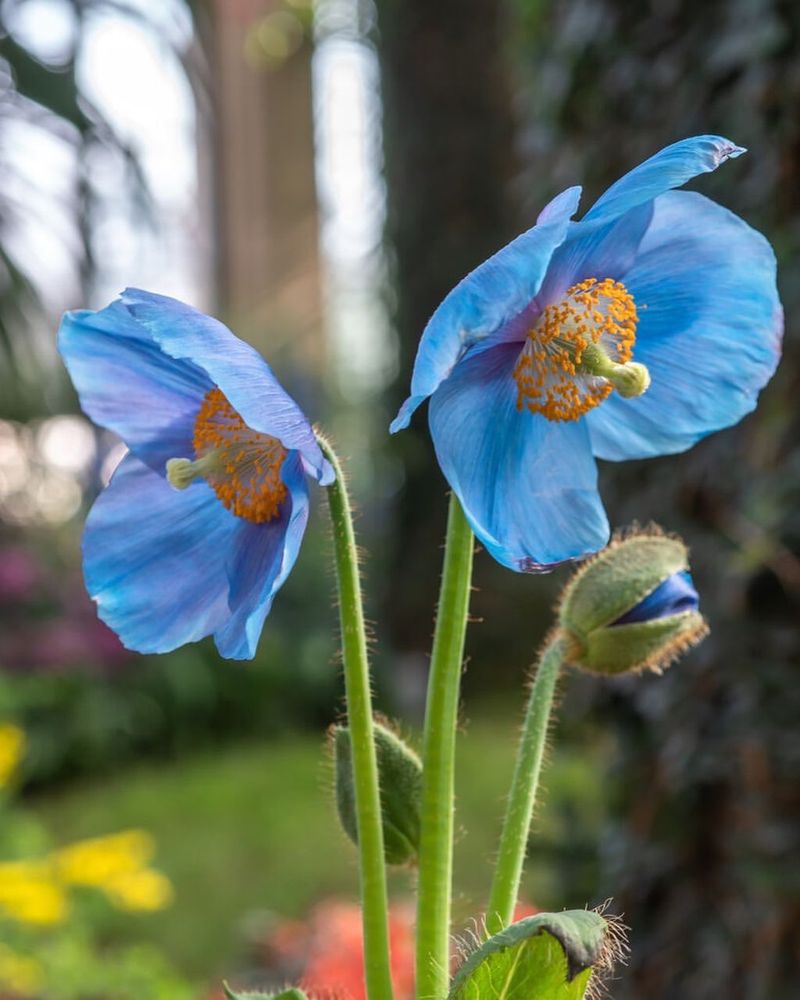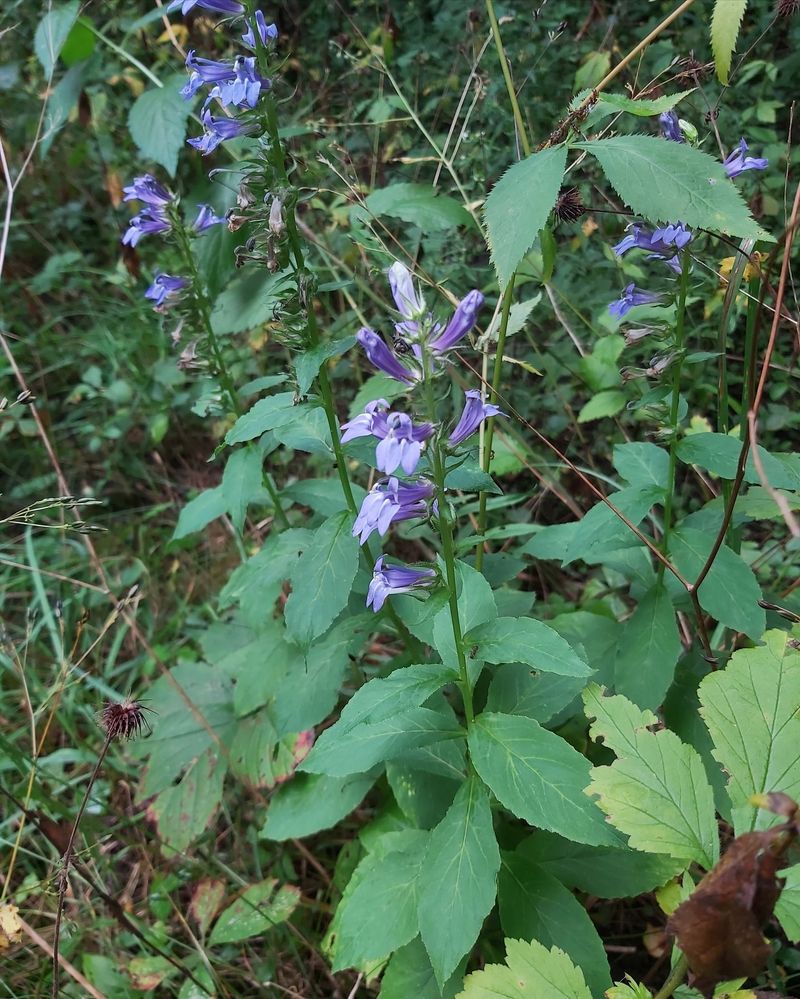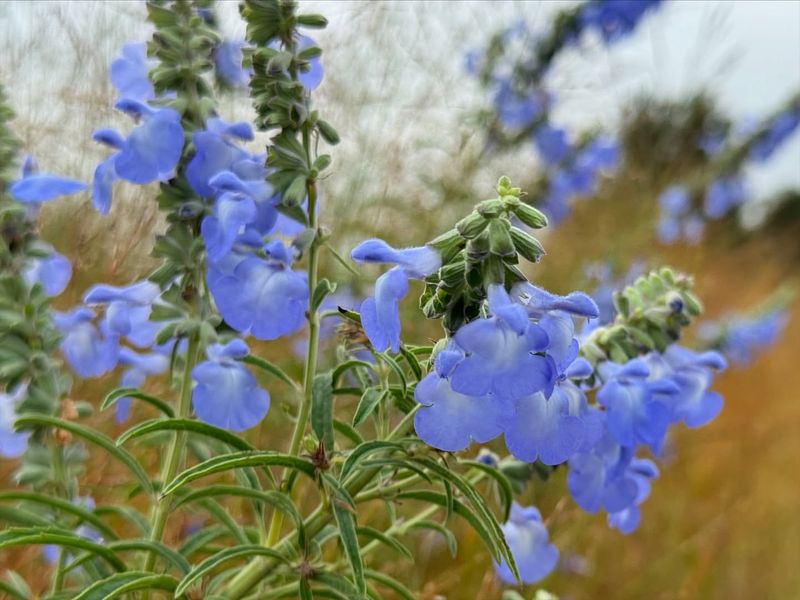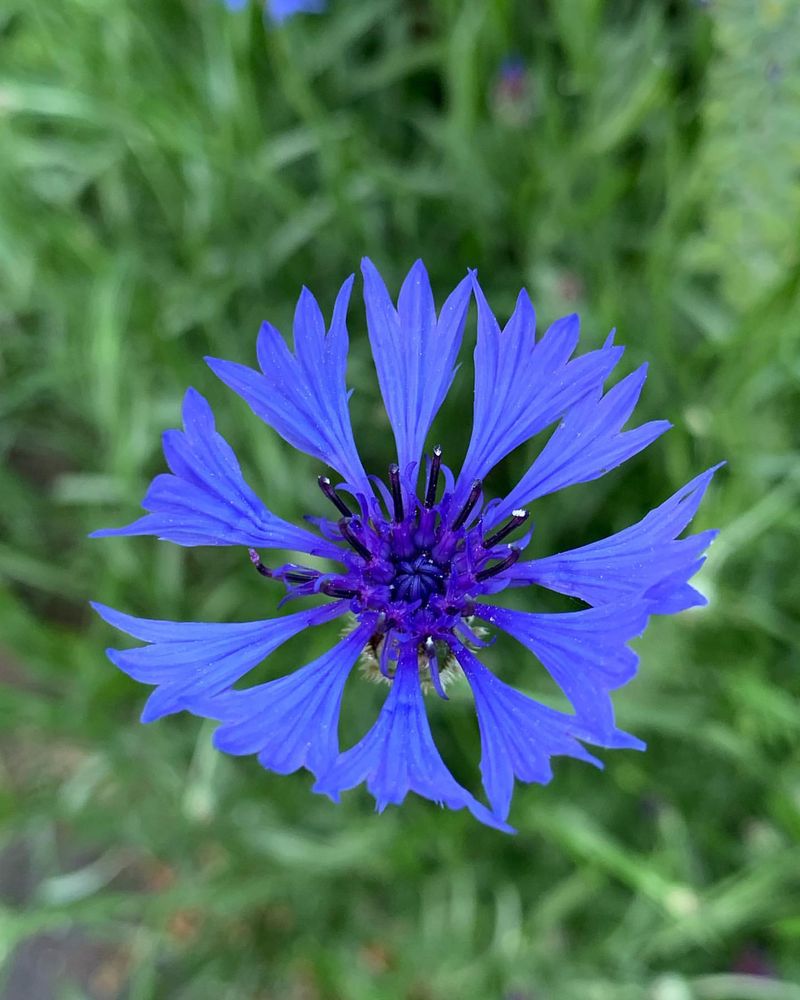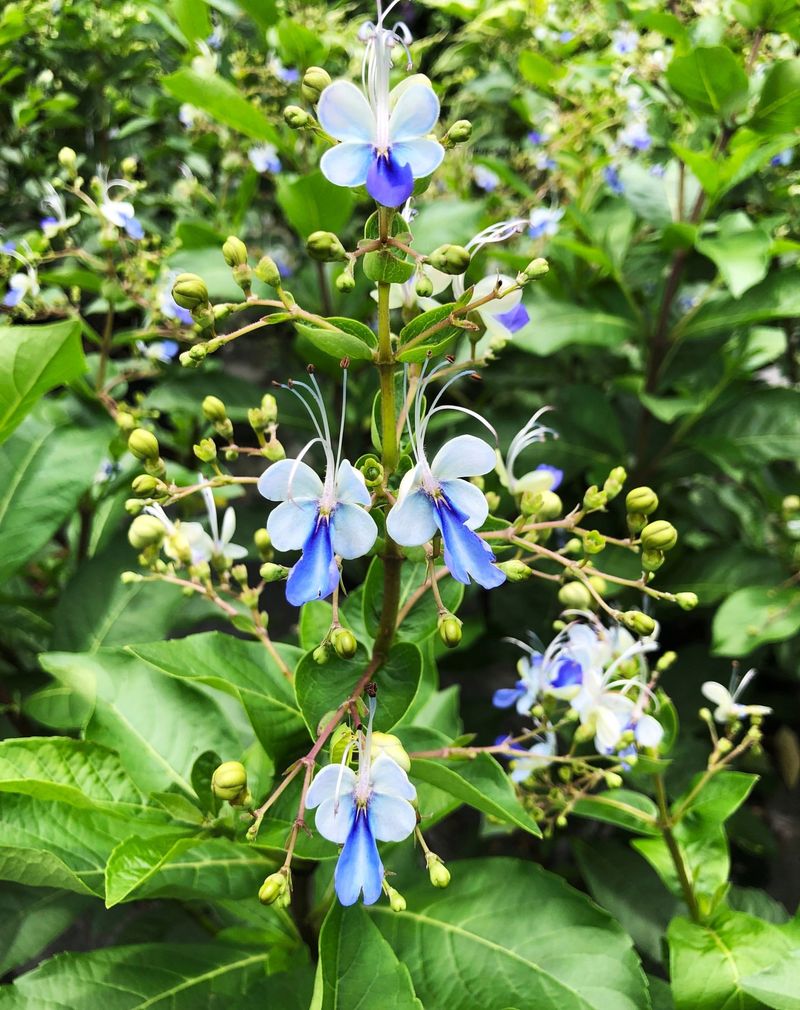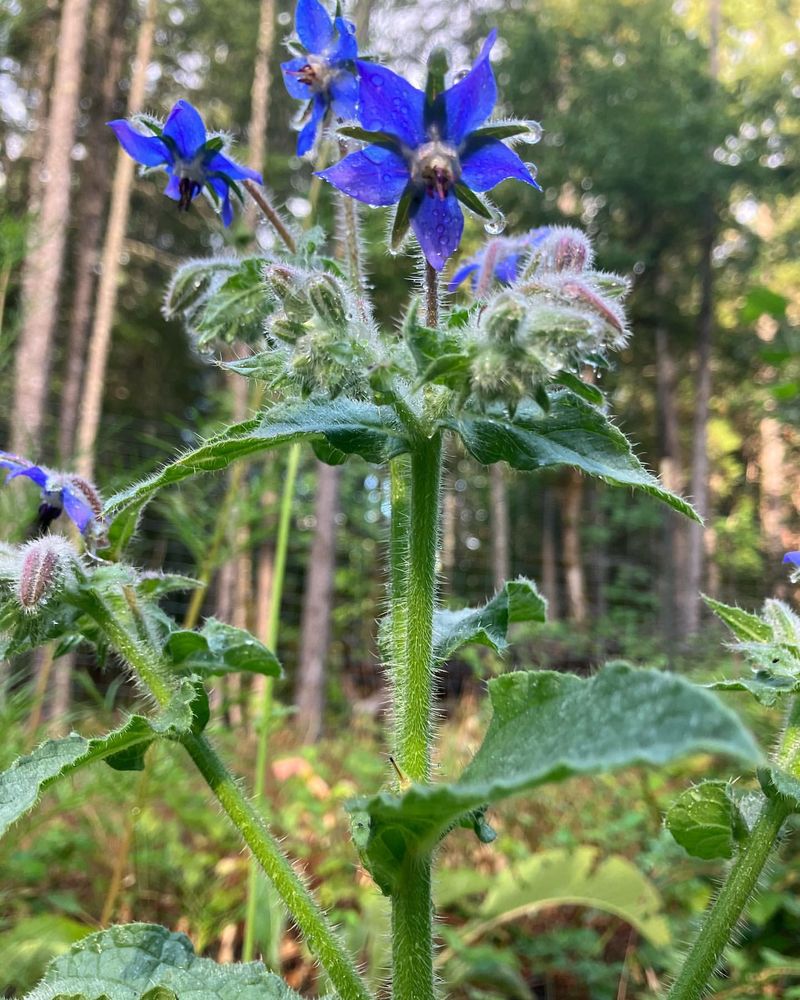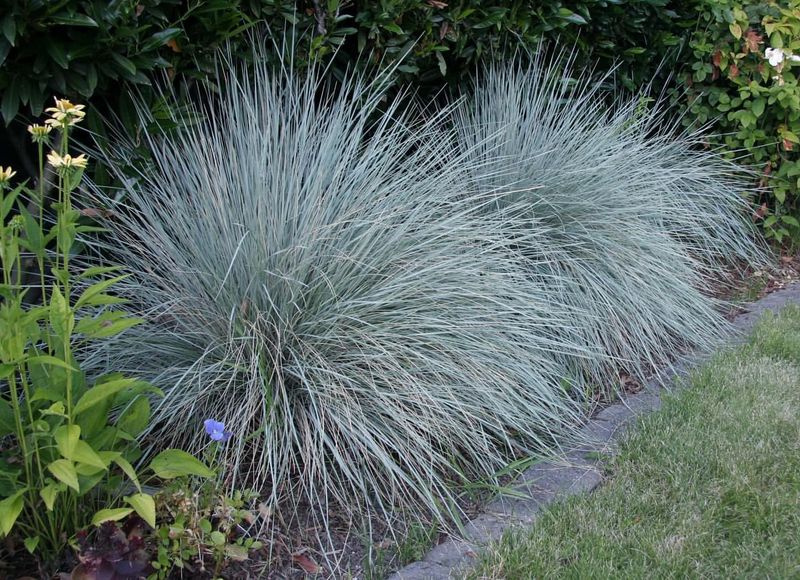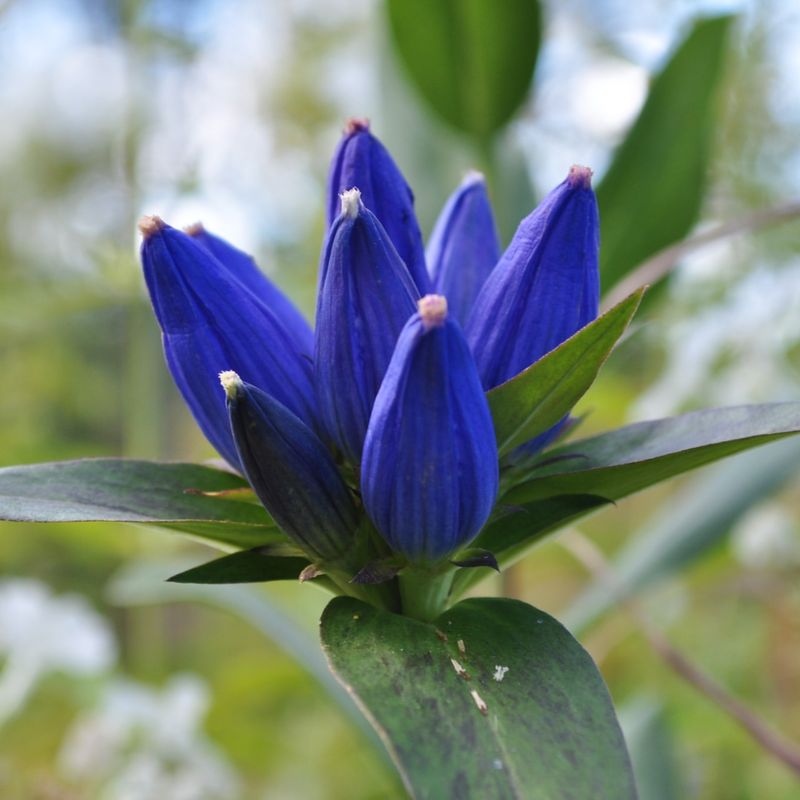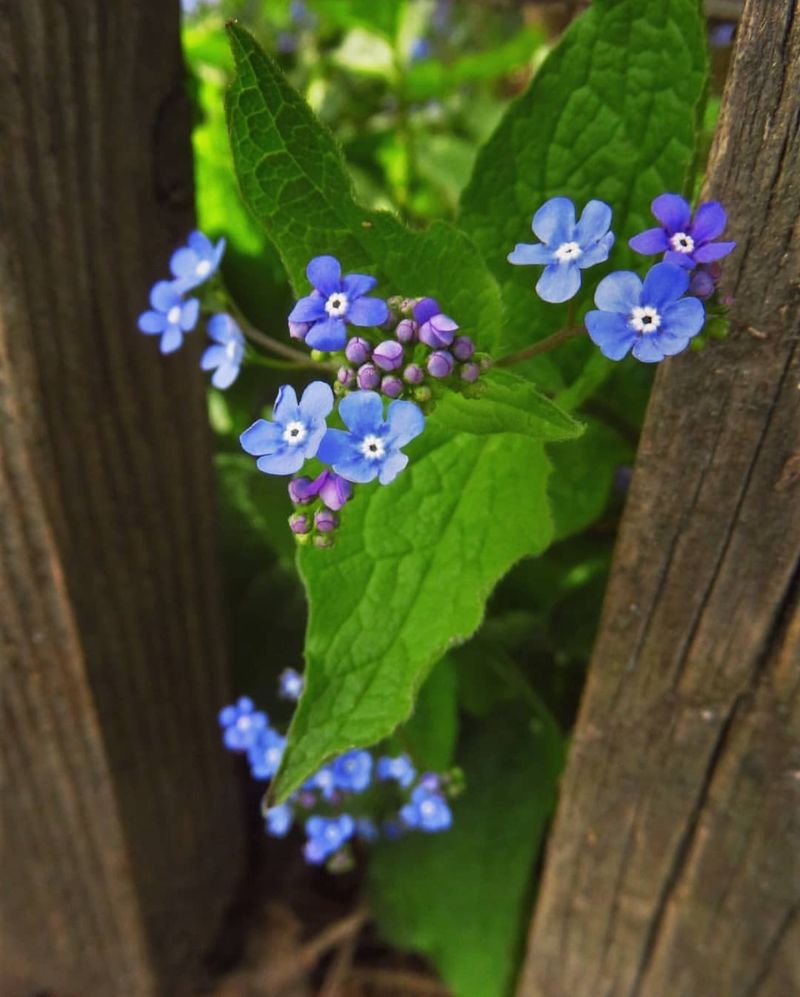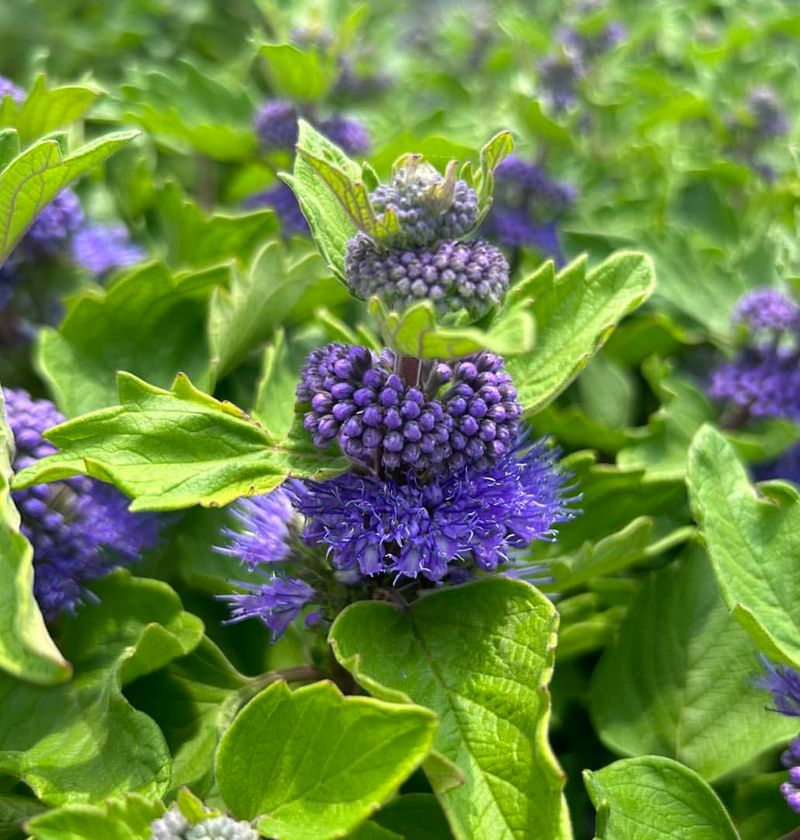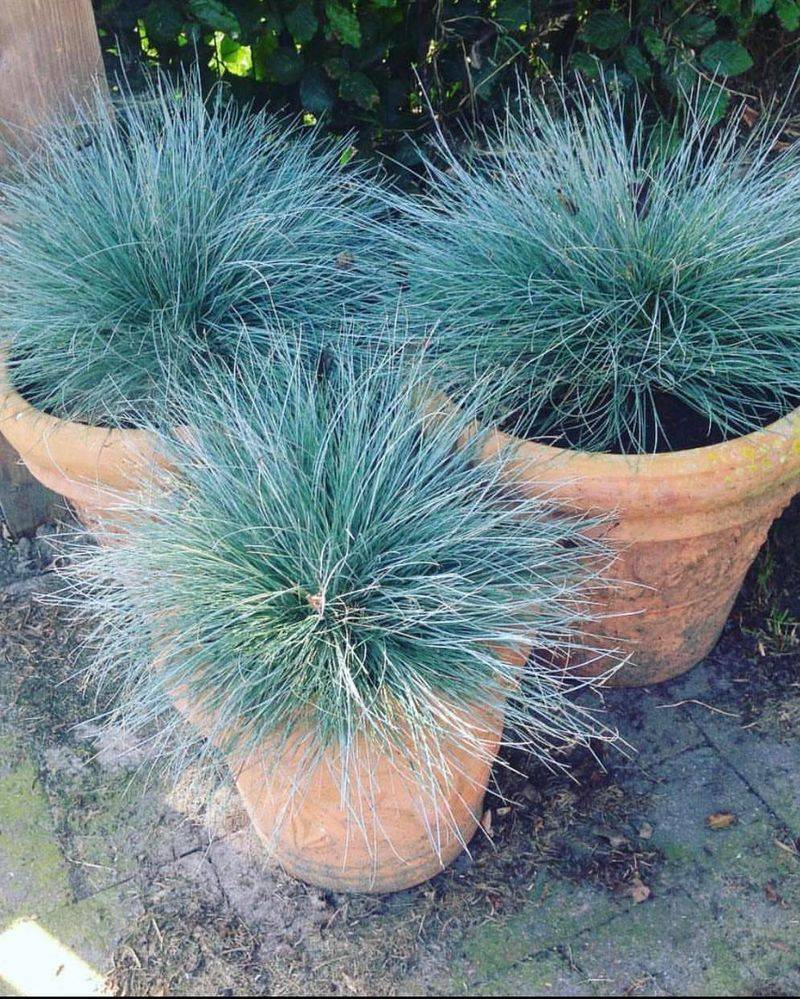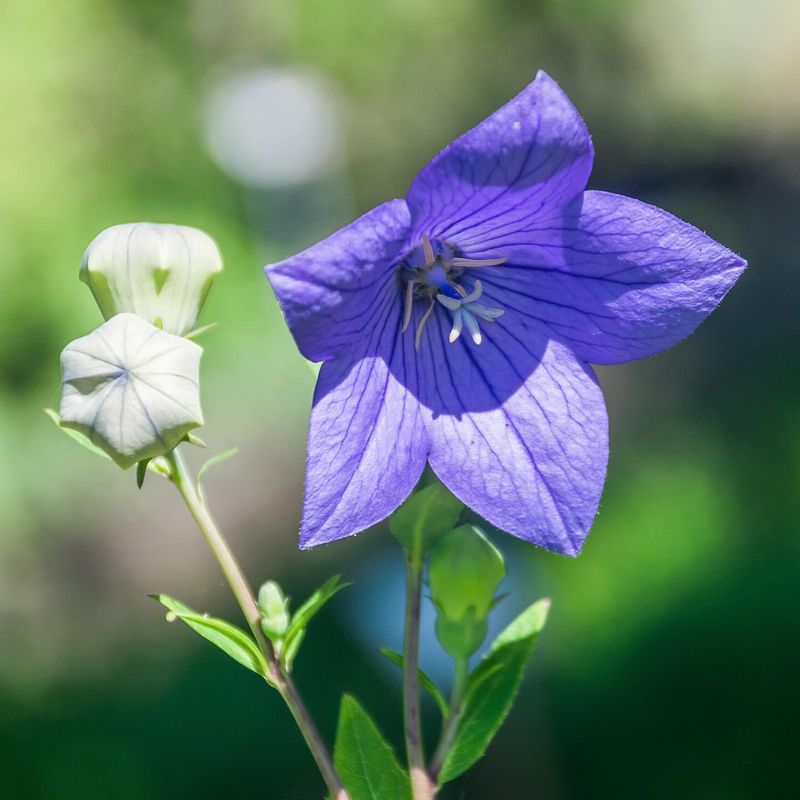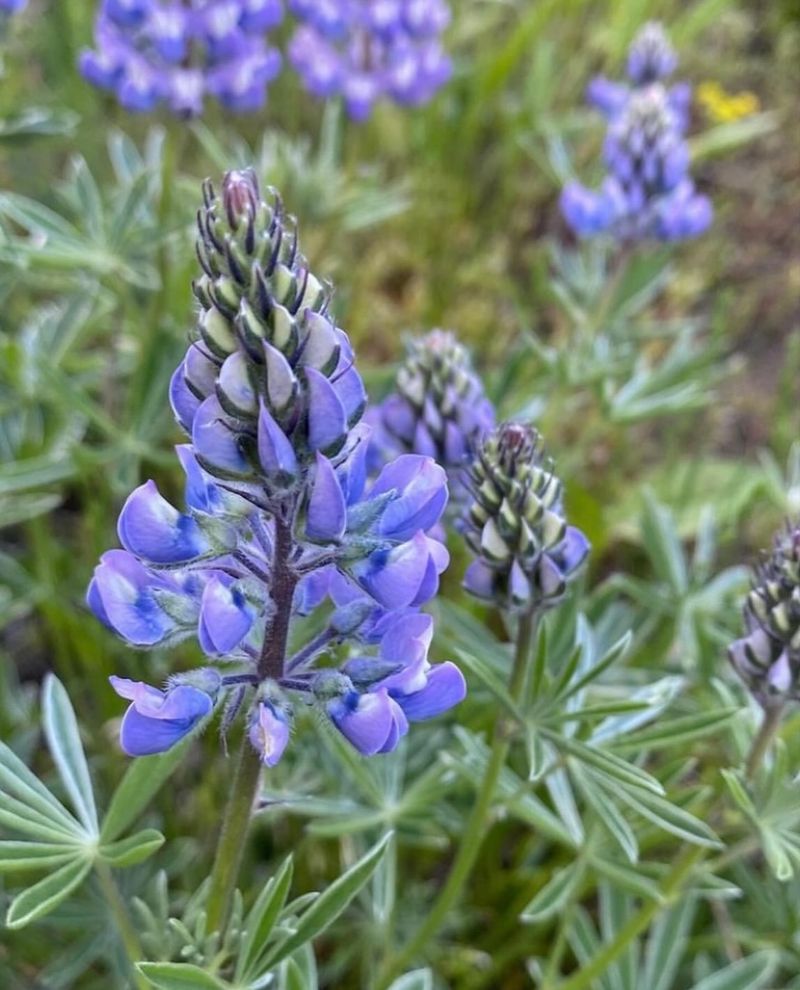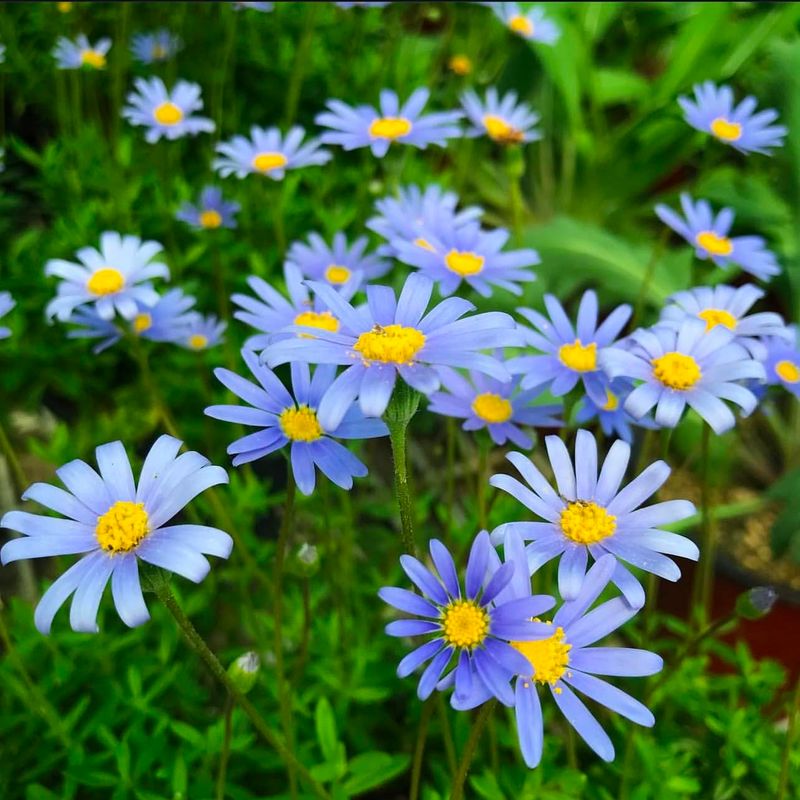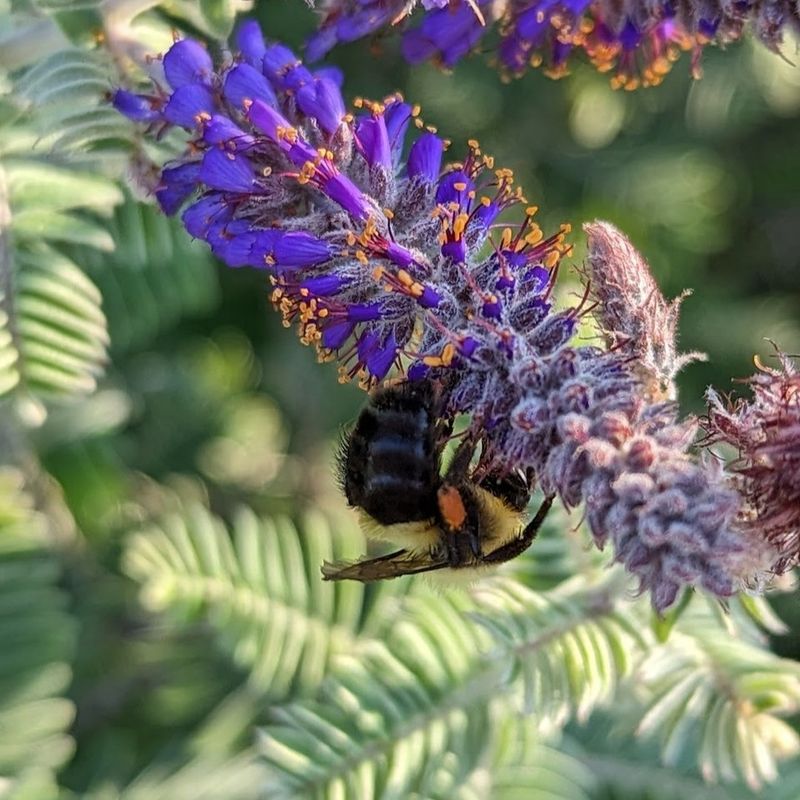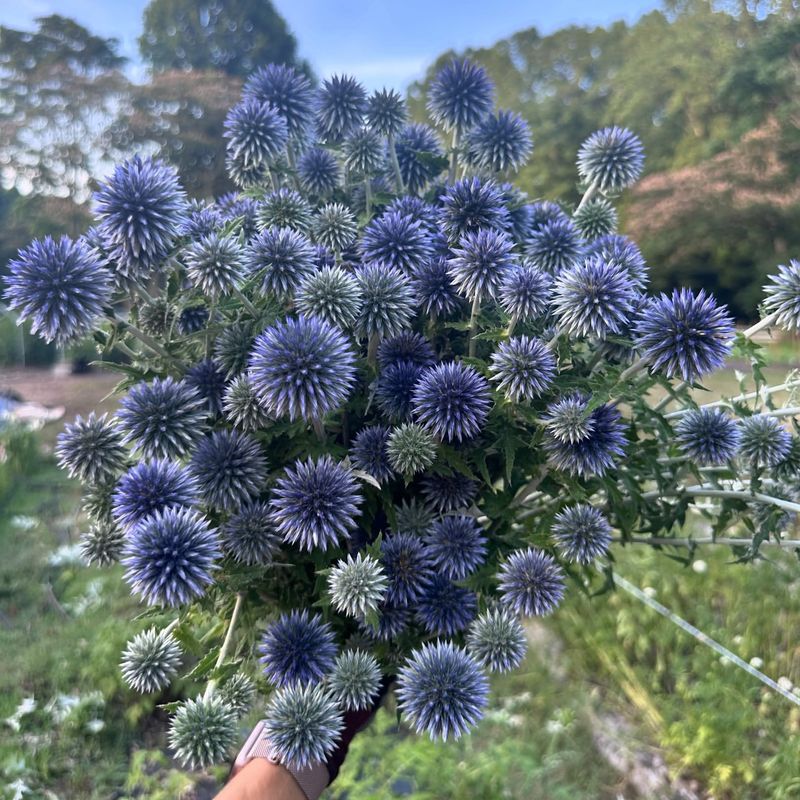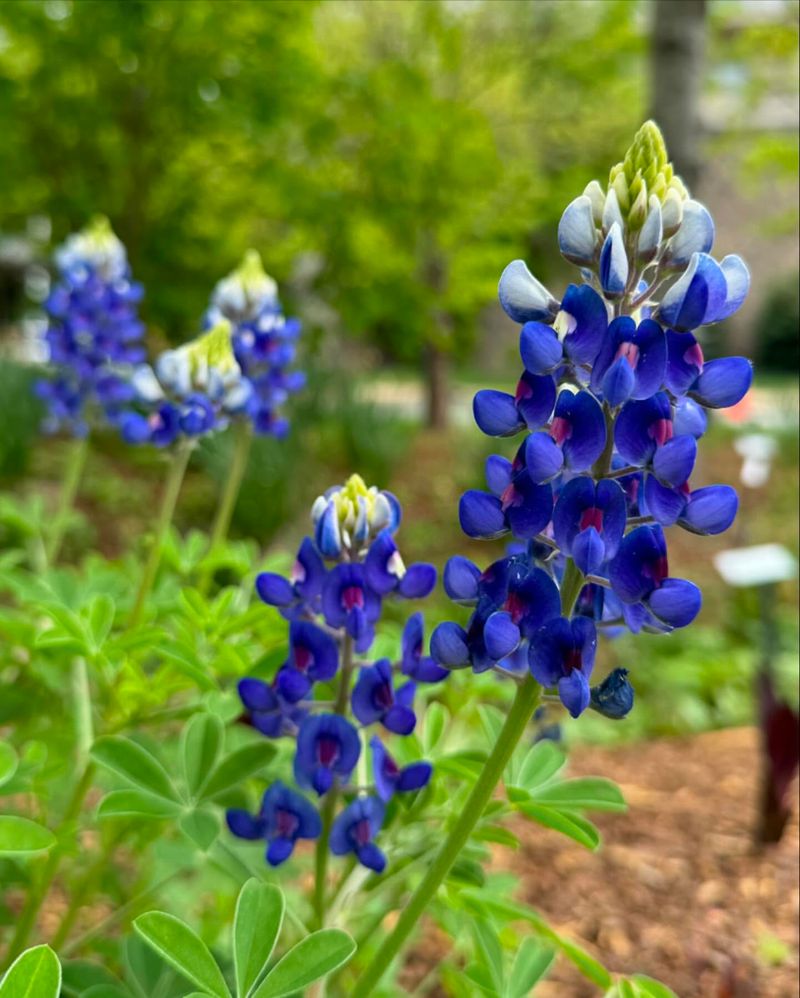Gardening with native plants is like painting with nature’s palette, and nothing adds a splash of tranquility like blue flowers. From the serene blues of wild indigos to the eye-catching hues of bluebells, native blue flowers offer more than just beauty. They support local ecosystems by attracting pollinators and provide a resilient choice for gardens. Whether you’re creating a calming oasis or a vibrant landscape, these 30 native blue flowers will inspire your green thumb. Get ready to dig in and discover the blue-tiful world of native blossoms that promise to bloom bright in your garden.
1. Eastern Blue Star
Eastern Blue Star blooms like a small galaxy in your garden. Its star-shaped flowers offer a gentle blue hue, creating a celestial look that is both captivating and calming. These perennial plants thrive in well-drained soil, making them a low-maintenance choice for any gardener.
They usually blossom in late spring, attracting butterflies and other pollinators. The foliage turns a golden hue in the fall, adding a splash of color to your autumn landscape. With a height of up to 3 feet, they provide a striking backdrop for shorter plants.
2. Bluebell
Bluebells are the symphony of spring gardens. With their delicate, bell-shaped flowers, they create a carpet of blue that resonates with the sound of nature waking up. These flowers prefer woodland settings, thriving in dappled shade.
Their vibrant blooms attract bees, enriching your garden with the buzz of life. As perennial plants, they return year after year, offering reliability and charm. Plant them in clusters for a dramatic effect that highlights their enchanting character, and let them serenade your senses.
3. Wild Blue Phlox
Wild Blue Phlox brings a touch of elegance to any garden. Its clusters of small, fragrant blue flowers are perfect for adding a soft, romantic feel to shady areas. This perennial prefers rich, well-drained soil and partial shade.
In early spring, it provides an early source of nectar for bees and butterflies. The lush foliage stays vibrant throughout the growing season, ensuring that your garden remains lively and colorful. Its low-growing nature makes it ideal for borders and ground cover.
4. Great Blue Lobelia
Great Blue Lobelia stands tall and proud, like a sentry of blue majesty. Its trumpet-shaped blooms offer a deep blue color that creates a dramatic flair in any garden. This plant thrives in moist, well-drained soil, making it perfect for water gardens.
Great Blue Lobelia attracts hummingbirds, adding a dash of excitement to your garden. Their blooming season extends into late summer, keeping your landscape vibrant. Plant them in groups for a striking visual impact, and let their beauty flow as freely as a river.
5. Virginia Bluebells
Virginia Bluebells offer a magical transformation in spring gardens. Their bell-shaped flowers start as pink buds and gradually turn into a stunning shade of blue. They thrive in rich, moist soil and prefer shady woodland settings.
These flowers attract butterflies, bringing movement and grace to your garden. As an ephemeral plant, they provide a brief but unforgettable floral display each spring. Pair them with ferns and other shade-loving plants for a harmonious and enchanting undergrowth.
6. Blue False Indigo
Blue False Indigo is an artist’s dream in the garden. Its bushy clusters of indigo-blue flowers create a striking contrast against green foliage. This plant thrives in sunny locations with well-drained soil, fitting perfectly into prairie-style gardens.
Its robust nature ensures it stands tall during strong winds, adding resilience to your landscape. The blooming period may be short, but the seed pods that follow offer additional interest. Use it as a focal point in perennial borders or as part of a wildflower meadow.
7. Azure Bluet
Azure Bluet adds a touch of daintiness to any garden scene. These tiny blue flowers, with their cheerful yellow centers, create a delicate tapestry across meadows and lawns. They prefer sunny to partly shaded areas and thrive in well-drained soil.
Though small, they bloom prolifically, creating a sea of blue that dances with the breeze. Their low-growing habit makes them perfect for rock gardens and borders. Azure Bluets bring joy to both gardeners and pollinators, enhancing the vibrancy of any landscape.
8. Blue Mistflower
Blue Mistflower brings an air of mystery to the garden with its fuzzy blue blooms. Resembling a soft mist, these flowers create a soothing presence that captivates the eye. They thrive in moist, well-drained soil and prefer sunny to partly shaded areas.
Their long blooming season, from late summer to fall, ensures your garden remains colorful and inviting. Blue Mistflower attracts butterflies and other beneficial insects, adding life to your landscape. Use them in mass plantings for a mesmerizing effect.
9. Blue-eyed Grass
Blue-eyed Grass may not be true grass, but it sure knows how to blend into a meadow! With its small, star-shaped blue flowers and grass-like leaves, it offers a charming illusion. This perennial thrives in sunny locations with well-drained soil.
Though petite, it blooms profusely, creating a subtle yet enchanting effect. Blue-eyed Grass is perfect for naturalizing in open fields or adding to rock gardens. Its easy-going nature makes it a lovely addition to any garden, offering more than meets the eye.
10. Blue Vervain
Blue Vervain stands as a beacon of resilience in wetlands. With its tall spikes of small blue flowers, it brings elegance and structure to moist, sunny areas. This perennial plant is highly adaptable and thrives in boggy conditions.
Blue Vervain attracts a variety of pollinators, making it a valuable addition to ecologically conscious gardens. Its long blooming period ensures continued interest throughout the summer months. Plant it alongside water features or in naturalized settings for a bold and beautiful statement.
11. Chicory
Chicory is the wild child of the garden, often found growing along roadsides with an unbridled spirit. Its vibrant blue flowers perch on top of wiry stems, creating a striking display. This hardy perennial thrives in sunny locations with well-drained soil.
Chicory’s deep roots make it drought-tolerant, a practical choice for low-maintenance gardens. Its flowers open in the morning and close by the afternoon, adding a playful twist to your daily garden routine. Use it to add a touch of wild beauty to your landscape.
12. Blue Flax
Blue Flax dances gracefully in the garden, with delicate blue flowers nodding on slender stems. This perennial thrives in sunny locations, embracing poor soil with a carefree attitude. A perfect fit for wildflower meadows and cottage gardens.
Its blooms appear in waves throughout the spring and summer, ensuring a steady display. Blue Flax attracts bees and butterflies, enriching your garden with movement and color. Plant them en masse for a sea of blue that sways in harmony with the wind.
13. Mountain Bluet
Mountain Bluet brings alpine elegance to your garden with its large, frilly-edged blue flowers. This perennial prefers cool, moist climates and thrives in well-drained soil. Its unique appearance makes it a standout in rock gardens and alpine settings.
Blooming from late spring to early summer, Mountain Bluet attracts bees and butterflies, enhancing the biodiversity of your garden. Their sturdy stems ensure they weather the elements gracefully, making them a resilient choice. Use them to add a touch of mountain magic to your landscape.
14. Himalayan Blue Poppy
Himalayan Blue Poppy is the garden’s elusive gem. With its large, vibrant blue flowers, it adds an exotic flair to shaded woodland gardens. This perennial thrives in cool, moist conditions, embodying the mystique of the Himalayas.
Though challenging to grow, its captivating beauty makes the effort worthwhile. Himalyan Blue Poppy attracts admirers with its delicate petals and striking color. Pair it with ferns and other shade-loving plants to create a serene and enchanting garden retreat.
15. Creeping Bellflower
Creeping Bellflower knows how to make an entrance with its tall spikes of bell-shaped blue flowers. This perennial thrives in a variety of soils and prefers sunny to partly shaded areas.
Its vigorous growth habit makes it ideal for naturalizing in meadows or adding height to garden borders. Blooming from early summer to fall, Creeping Bellflower offers a long-lasting display that attracts bees and butterflies. Use it to create vertical interest and a touch of whimsy in your garden.
16. Salvia azurea
Salvia azurea, or Blue Sage, paints the garden in shades of sky. Its spires of sky-blue flowers create a striking contrast against golden grasses in prairie gardens. This perennial thrives in sunny locations with well-drained soil.
Blooming from late summer to fall, it attracts bees and butterflies, adding life and color to your landscape. Salvia azurea’s drought-tolerant nature makes it a sustainable choice for eco-friendly gardens. Use it to create a serene and harmonious color palette in your garden.
17. Bachelor’s Button
Bachelor’s Button adds a dash of charm to cottage gardens with its clusters of bright blue flowers. Their silvery stems provide a stunning contrast, making them a favorite among gardeners.
This annual plant thrives in sunny locations and well-drained soil, offering a carefree addition to any landscape. Bachelor’s Button attracts butterflies, adding movement and color to your garden. Plant them among herbs or in mixed borders for a touch of whimsy and nostalgia.
18. Blue Butterfly Bush
Blue Butterfly Bush is a fluttering sensation in butterfly gardens. Its arching spikes of blue flowers attract a myriad of butterflies, creating a dynamic and lively display.
This perennial thrives in sunny locations with well-drained soil, offering a long blooming season from summer to fall. Blue Butterfly Bush’s fragrant blooms make it a delightful addition to any garden. Plant it as a focal point or in borders, and watch your garden come alive with color and movement.
19. Borage
Borage adds a touch of the unexpected to herb gardens with its star-shaped blue flowers and fuzzy leaves. Known for its edible blooms, Borage is a favorite among culinary enthusiasts.
This annual plant thrives in sunny locations with well-drained soil, offering a unique addition to both ornamental and edible landscapes. Borage attracts bees and other pollinators, enhancing the biodiversity of your garden. Use it to add a splash of color to salads or as a garnish, bringing both beauty and flavor.
20. Blue Oat Grass
Blue Oat Grass adds a touch of elegance with its tufts of blue-gray leaves. This ornamental grass thrives in sunny locations, offering a modern and sophisticated look to gardens.
Its tall flower spikes sway gracefully in the wind, adding movement and texture to landscapes. Blue Oat Grass is perfect for borders, rock gardens, and contemporary designs. Its low-maintenance nature makes it an easy choice for gardeners seeking beauty without fuss. Use it to create a serene and calming atmosphere.
21. Gentian
Gentian brings a touch of alpine beauty with its trumpet-shaped deep blue flowers. This perennial thrives in cool, moist environments, making it perfect for alpine meadows and rock gardens.
Gentian’s striking color and unique form attract both pollinators and admirers alike. Blooming from late summer to fall, it offers a stunning display that brightens any landscape. Use it to add a pop of color and a bit of mountain charm to your garden.
22. Siberian Bugloss
Siberian Bugloss enchants woodland gardens with its heart-shaped leaves and clusters of small blue flowers. This perennial thrives in shady areas with moist, well-drained soil.
Its early spring blooms attract pollinators, providing an important food source in the garden. The lush foliage remains attractive throughout the growing season, adding texture and visual interest. Use Siberian Bugloss as a ground cover or in mixed borders to create a lush and inviting garden space.
23. Caryopteris
Caryopteris, or Bluebeard, adds a beard of blue to the garden with its clusters of vibrant flowers. This deciduous shrub thrives in sunny locations and well-drained soil.
Blooming from late summer to fall, it attracts bees and butterflies, adding life and movement to your landscape. Caryopteris’ aromatic foliage provides additional sensory pleasure, making it a wonderful addition to sensory gardens. Use it to add structure and color to mixed borders.
24. Blue Fescue
Blue Fescue adds a soft touch to contemporary gardens with its low mounds of blue-gray foliage. This ornamental grass thrives in sunny locations and well-drained soil.
Its delicate flower spikes add texture and movement, creating a dynamic landscape feature. Blue Fescue is perfect for edging, rock gardens, and modern designs. Its low-maintenance nature makes it an easy choice for gardeners seeking style and simplicity. Use it to create a cohesive and polished look in your garden.
25. Balloon Flower
Balloon Flower surprises with its inflated blue buds that burst into star-shaped blooms. This perennial thrives in sunny locations and well-drained soil, offering a whimsical addition to cottage gardens.
Blooming from mid-summer to fall, Balloon Flower attracts pollinators, adding life and activity to your garden. Its unusual form and cheerful color make it a favorite among gardeners. Use it to create a playful and enchanting garden display that delights both young and old.
26. Lupine
Lupine stands tall and proud in the garden with its spires of blue flowers. This perennial thrives in sunny locations and well-drained soil, making it a staple in cottage gardens.
Lupine attracts bees and butterflies, enriching the garden ecosystem with life. Its nitrogen-fixing properties improve soil health, benefiting neighboring plants. Use it to create vertical interest and vibrant color in your garden, and enjoy the symphony of bees buzzing among the blooms.
27. Blue Marguerite
Blue Marguerite greets the garden with a cheerful wave of daisy-like blue flowers. This perennial thrives in sunny locations, preferring coastal climates with well-drained soil.
Blooming from spring to fall, Blue Marguerite attracts butterflies, adding movement and color to your landscape. Its compact growth habit makes it perfect for borders and container gardens. Use it to create a coastal-inspired garden that brings the serenity of the sea to your home.
28. Leadplant
Leadplant offers a subtle elegance with its silvery leaves and spikes of purple-blue flowers. This shrub thrives in sunny locations, fitting perfectly into prairie-style gardens.
Its drought-tolerant nature makes it a practical choice for low-maintenance landscapes. Leadplant attracts pollinators, enhancing biodiversity and ecological health. Use it to add texture and a touch of color to naturalistic plantings, and enjoy the gentle movement of tall grasses swaying around it.
29. Globe Thistle
Globe Thistle adds a touch of drama with its spherical blue flowers. This perennial thrives in sunny locations and well-drained soil, offering a bold addition to formal gardens.
Its spiky foliage and unique form attract both pollinators and admirers, providing visual interest and texture. Blooming from midsummer to fall, Globe Thistle offers a long-lasting display that captivates the eye. Use it to create a striking focal point in your garden, and enjoy its architectural beauty.
30. Texas Bluebonnet
The Texas Bluebonnet is a beloved native flower that paints the fields with its vibrant hue. These flowers are not just visually captivating but also low-maintenance, making them a favorite among gardeners.
Growing up to 24 inches tall, they bloom in early spring and thrive in sunny locations with well-drained soil. The Texas Bluebonnet is ideal for wildflower gardens or meadows, where it can spread naturally.
Planting these flowers provides a habitat for local pollinators, including bees and butterflies, contributing to the biodiversity of your garden.

